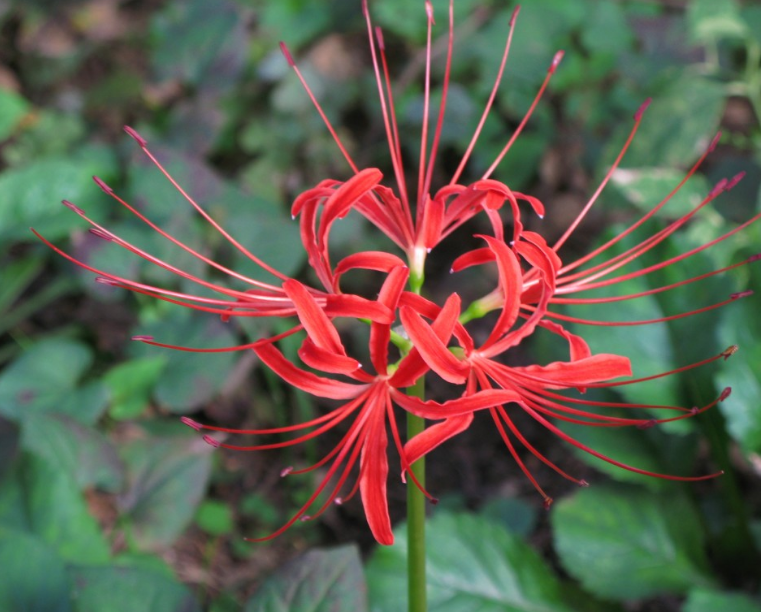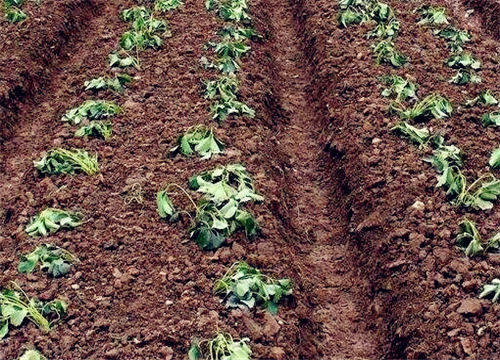"Flower queen" rose breeding methods and precautions introduced!
Rose flowers are rich and varied, known as the "queen of flowers", and are loved by many people. However, when raising rose flowers, we need to pay attention to many problems such as rotting roots and so on. Today, the editor will introduce to you the breeding methods and points for attention of next month's seasonal flowers:
I. Culture methods of rose flowers
1. Soil: rose does not have strict requirements on soil, but it is better to use slightly acidic soil rich in humus, generally choose fertile, loose and well-drained soil, have holes in the bottom of the basin, and pad some gravel to maximize the drainage capacity.
2. Lighting: the rose likes the environment with plenty of sunshine and air circulation, so remember not to breed the rose in a dark and damp place. In order to avoid the bright light, you can temporarily put it in the shade place, and pay special attention to shade during the flowering period, otherwise it is easy to dry the flowers.
3. Temperature: rose likes to grow in a warm environment, but it is afraid of heat, so it is necessary to pay attention to proper shade when breeding in summer, and the most suitable temperature is 22-25 ℃ when it is hot.
4. Watering: rose likes a warm and humid environment, and the air humidity of 75% is the most suitable, and it can also withstand slight drought. Basically follow the principle of no drying and no watering, and watering time and amount of water should be carried out according to the soil conditions in the basin.
5. Fertilization: rose is the peak growing season after May. It should be topdressing every 10 days. No special purchase of fertilizer is required. Fish juice and vegetable leaf juice that are mature and fermented can be used. The ratio of fertilizer to water is about 3:7, and fertilization lasts until November.
6. Pruning: rose has long vines that allow it to grow freely, which not only does not form, but also affects growth and flowering, so it should grow well on a pre-arranged support frame as needed to form a unique ornamental shape.
7. Pest prevention: rose flowers can be sprayed with 15% quicklime mixed with water or sterilized liquid for pest control in peacetime. From July to August, they should be checked and controlled in time. Chemicals should be sprayed 2 or 3 times a week to prevent them. Diseased branches and leaves should be cut off in time.
II. Matters needing attention in rose culture
1. Anti-freezing. Rose has a strong cold tolerance, which can withstand the low temperature of-10 ℃. Generally speaking, the south can be placed directly under the eaves facing south for the winter, while the northern potted rose moves inward to indoor ventilation when the temperature drops to 10 ℃. It should be noted that after the flowers wither in October, do not prune, apply a mature phosphate fertilizer to promote the branches strong and full, enhance the cold tolerance. In addition, when the temperature is very low in winter, it can be properly watered when it is slightly warmer to prevent the plant from dying from dry freezing.
2. Trim. When the new branch of rose grows to 15cm to 20cm, it needs to cut off about 3cm at the top to promote the formation of branches, and when the lateral branch grows to a certain extent, it can also be coring, constantly repeating, the rose plant type is plump, and the flowers bloom more.

3. Put on the basin. Potted roses at home all involve the problem of changing pots and putting on pots. The basin change is generally carried out before sprouting in early spring, change part of the new soil, pour water thoroughly, put it in a cool place, and transfer to a sunny place for maintenance a week later.
4. Pest control. In the case of poor ventilation and insufficient light, rose flowers are easily disturbed by diseases and insect pests, such as aphids, powdery mildew, black spot, etc., when diseases and insect pests occur, they are sprayed in time to avoid affecting flowering.
Third, the reasons for the rotting roots of rose flowers
1. Flowerpot
When cultivating Chinese rose, the size of the flowerpot needs to match the size of the rose. If the flowerpot is too small, the root system will grow so easily that it can be filled with flowerpots and cannot continue to grow. Once this is the case, the root system can not develop well, there will be a lot of root problems, such as shortness of breath and so on, which will lead to rotting root in serious cases.
2. Watering
Improper watering is the main reason for the rotten roots of most plants, and rose flowers are no exception. In fact, the rose is not afraid of water plants, it is very resistant to waterlogging. There is a lot of water demand during the growth period, so it is necessary to water more. But potted rose flowers are best watered moderately and reasonably, because if too much water leads to stagnant water, the flowerpot will hinder the discharge of water and cause its roots to rot.
3. Temperature difference
Temperature difference is also a factor that affects the root growth of Chinese rose. If the temperature difference is too large, for example, when watering, there is a difference between water temperature and soil temperature, which will stimulate the root system.
Fourth, what about the rotten roots of Chinese roses?
1. Suitable basin
The growth of Chinese rose needs a suitable flowerpot. When potting, the pot needs to be larger than the plant of Chinese rose, giving more space to the root system of Chinese rose. And need to change pots in time with the growth of rose flowers.
2. Watering and temperature
Watering needs to master a degree, with the soil moist but not stagnant water is better.
3. Rotten root treatment
If you find rotten roots of Chinese roses, you can cut off their rotten roots, soak them with carbendazim, and then put them in a ventilated place where new roots can grow in a week or so. Just replant it.
Time: 2019-03-14 Click:
- Prev

Is the other shore flower, known as "unrighteous grass", poisonous? How to breed it?
The other shore flower belongs to a perennial herb of the family Amaryllidaceae, which is also called unrighteous grass because the flowers and leaves cannot meet. There are many legends about the other shore flower. Many people think that it is colorful and want to breed, but rumors say it is poisonous, so is the other shore flower really poisonous? How to raise it?
- Next

When is the best time to plant strawberries? Don't plant it the old-fashioned way, double your yield!
Strawberry is a spring fruit, generally in February and March each year when there are a large number of fresh strawberries mature on the market. When is the best time to plant strawberries? Many people are still growing strawberries the old-fashioned way. No wonder the yield is not high
Related
- Fuxing push coffee new agricultural production and marketing class: lack of small-scale processing plants
- Jujube rice field leisure farm deep ploughing Yilan for five years to create a space for organic food and play
- Nongyu Farm-A trial of organic papaya for brave women with advanced technology
- Four points for attention in the prevention and control of diseases and insect pests of edible fungi
- How to add nutrient solution to Edible Fungi
- Is there any good way to control edible fungus mites?
- Open Inoculation Technology of Edible Fungi
- Is there any clever way to use fertilizer for edible fungus in winter?
- What agents are used to kill the pathogens of edible fungi in the mushroom shed?
- Rapid drying of Edible Fungi

